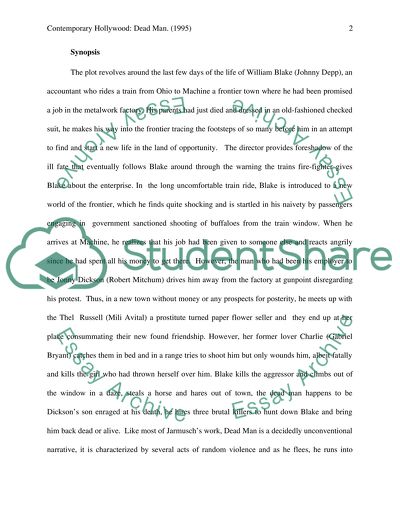Cite this document
(“Contemporary Hollywood: Dead Man. (1995) Essay Example | Topics and Well Written Essays - 3000 words”, n.d.)
Contemporary Hollywood: Dead Man. (1995) Essay Example | Topics and Well Written Essays - 3000 words. Retrieved from https://studentshare.org/visual-arts-film-studies/1488681-contemporary-hollywood-dead-man-1995
Contemporary Hollywood: Dead Man. (1995) Essay Example | Topics and Well Written Essays - 3000 words. Retrieved from https://studentshare.org/visual-arts-film-studies/1488681-contemporary-hollywood-dead-man-1995
(Contemporary Hollywood: Dead Man. (1995) Essay Example | Topics and Well Written Essays - 3000 Words)
Contemporary Hollywood: Dead Man. (1995) Essay Example | Topics and Well Written Essays - 3000 Words. https://studentshare.org/visual-arts-film-studies/1488681-contemporary-hollywood-dead-man-1995.
Contemporary Hollywood: Dead Man. (1995) Essay Example | Topics and Well Written Essays - 3000 Words. https://studentshare.org/visual-arts-film-studies/1488681-contemporary-hollywood-dead-man-1995.
“Contemporary Hollywood: Dead Man. (1995) Essay Example | Topics and Well Written Essays - 3000 Words”, n.d. https://studentshare.org/visual-arts-film-studies/1488681-contemporary-hollywood-dead-man-1995.


